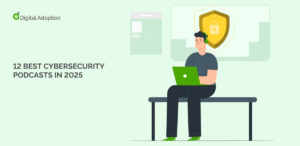CIOs are expected to perform a lot of heavy lifting in a business environment that is continually changing – among other things, this means changes in the CIO reporting relationship.
In this post, we’ll look at how the CIO reporting structure is changing, why it is changing, and what this means for the future of the IT department.
The CIO Reporting Structure
CIOs are the highest-level IT executives in most business structures. They most often interact with:
The CEO and the board. In most organizations, CIOs report directly to the CEO and the board.
Other IT leaders. Other IT leaders, such as IT Directors, CDOs, and CTOs, will usually report directly to the CIO.
The C-suite. The CIO typically operates on the same level as the rest of the C-suite. In the past, the CIO was viewed more as an operational manager than as an IT leader, but this is changing, as we’ll discover below.
There are a number of trends that are reshaping these relationships, however. Primarily, these changes are due to the increasing importance of IT and digital technology.
Digital Trends Reshaping the CIO Reporting Relationship
In the past few years, the CIO reporting relationship has evolved. This is due to the fact that CIOs are becoming more and more involved in the business decision-making process and the culture of their companies.
CIOs, for instance, are now responsible for:
Aligning IT with business strategy. The CIO’s goal is to make sure that IT and the business are aligned so that the IT team can focus on maintaining IT operations, improving productivity, and maximizing efficiency within the business.
Building a strong foundation for innovation. Today, CIOs are the ones responsible for driving innovation and digital transformation in their organizations. That is, they must both design and execute technology-driven initiatives that drive business outcomes and introduce new digital solutions that will help the company achieve its strategic goals.
Cultivating a digital-first culture. Modern companies are increasingly adopting a digital-first culture within their organizations. Tech leaders are not just focused on “deploying” new tools, therefore, they are focused on embedding those tools into the fabric of the business, training employees, and building digital-friendly mindsets.
Leading digital transformation initiatives. The more freedom an organization gives its CIO to lead digital transformation initiatives, the better that company performs, according to research from firms such as Tata Consultancy Services. This makes sense, since CIOs lie at the intersection between digital and business – the core driver of innovation and disruption in the modern enterprise.
In short, the CIO role has changed, with IT leaders now expected to be both strategic and operational leaders. They have to be both a business and technology executive, which means they need to understand the business, and they need to be tech-savvy.
This shift in the role of the CIO carries a number of implications for CIOs, IT departments, business leaders, and the entire organization.
Implications of the Changing Organizational Structure
The changes discussed above mean a number of things for the CIO:
CIOs are becoming business leaders in their own right. Since CIOs are increasingly taking on a more active role in the development of business strategy, they are no longer simply IT operations managers – along with LOB executives, they are helping to steer the organization.
CIOs must offload their responsibilities to other IT leaders. Of course, the more responsibility the CIO adopts, the more IT tasks they must delegate to other managers. IT Directors, CTOs, CDOs, and CISOs, for instance, must now begin handling many of the responsibilities that CIOs have been traditionally responsible for.
CIOs are becoming culture leaders. At first glance, IT seems hardly the department for leading organizational culture change. However, since digital transformation often goes hand-in-hand with cultural transformation, CIOs will often be the ones to drive that change forward, as Gartner has suggested. Culture change, after all, can accelerate digital transformation – or, if that culture opposes change, it can hinder it.
CIOs must work harder than ever to stay up-to-date, skilled, and relevant. As CIOs adopt new responsibilities, such as cybersecurity and data management, they must also be willing to learn new skills. People skills, soft skills, and leadership skills, for instance, will all become crucial for the CIO in the coming years.
CIOs will need to help reshape the structure of the organization. The organization of tomorrow will need to place IT at its heart. Since technology-driven innovation is fueling organizational change, after all, it only makes sense to put IT at the strategic center of business operations. CIOs, naturally, should work closely with CEOs to drive this type of change.
Not all of these forecasts will hold true for every CIO in every instance.
However, digital innovation is leaving no industry or business untouched. Regardless of the organization in question, therefore, CIOs will invariably play a more important role in years to come – and those that fail to adapt may have a harder time staying competitive in the digital future.









